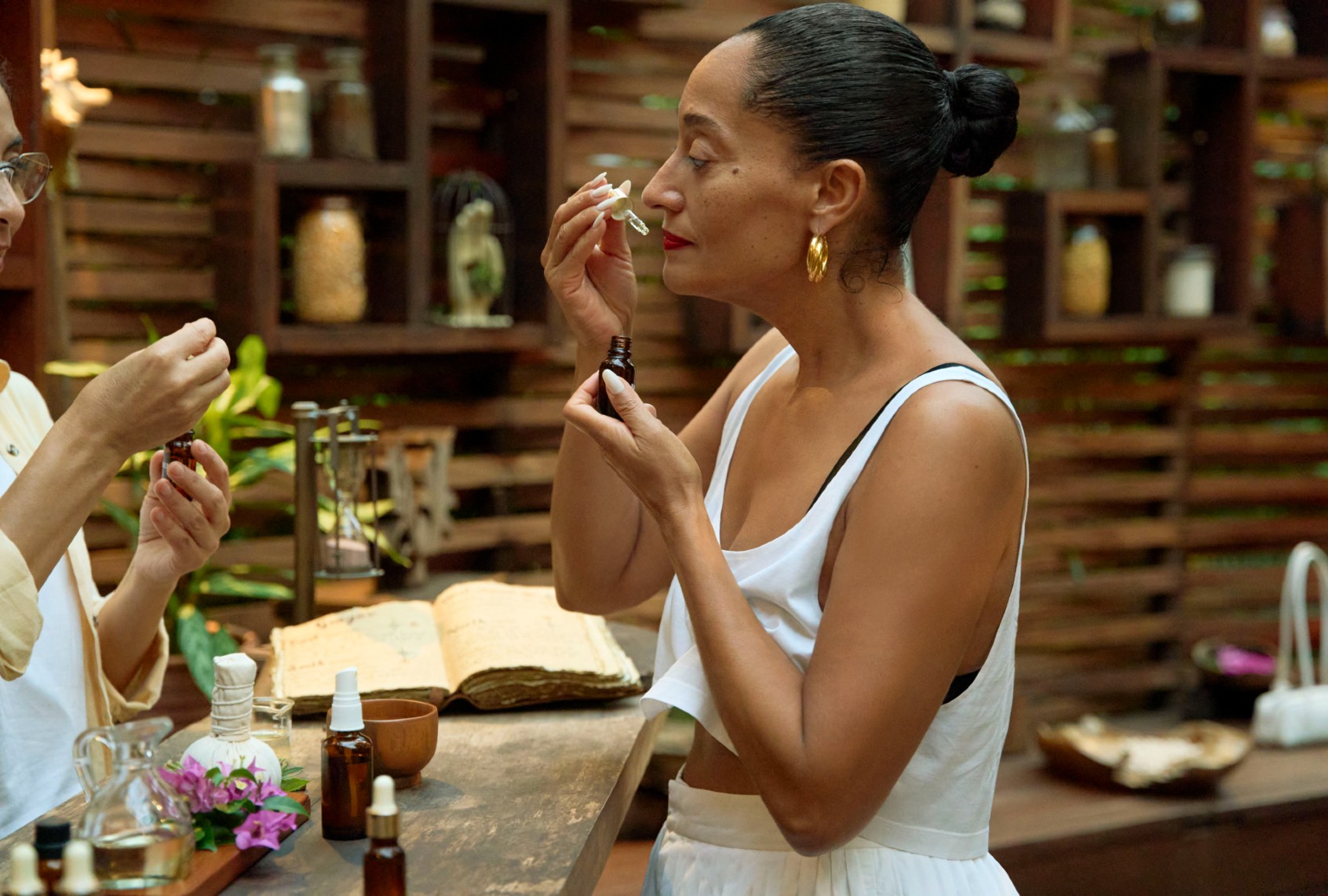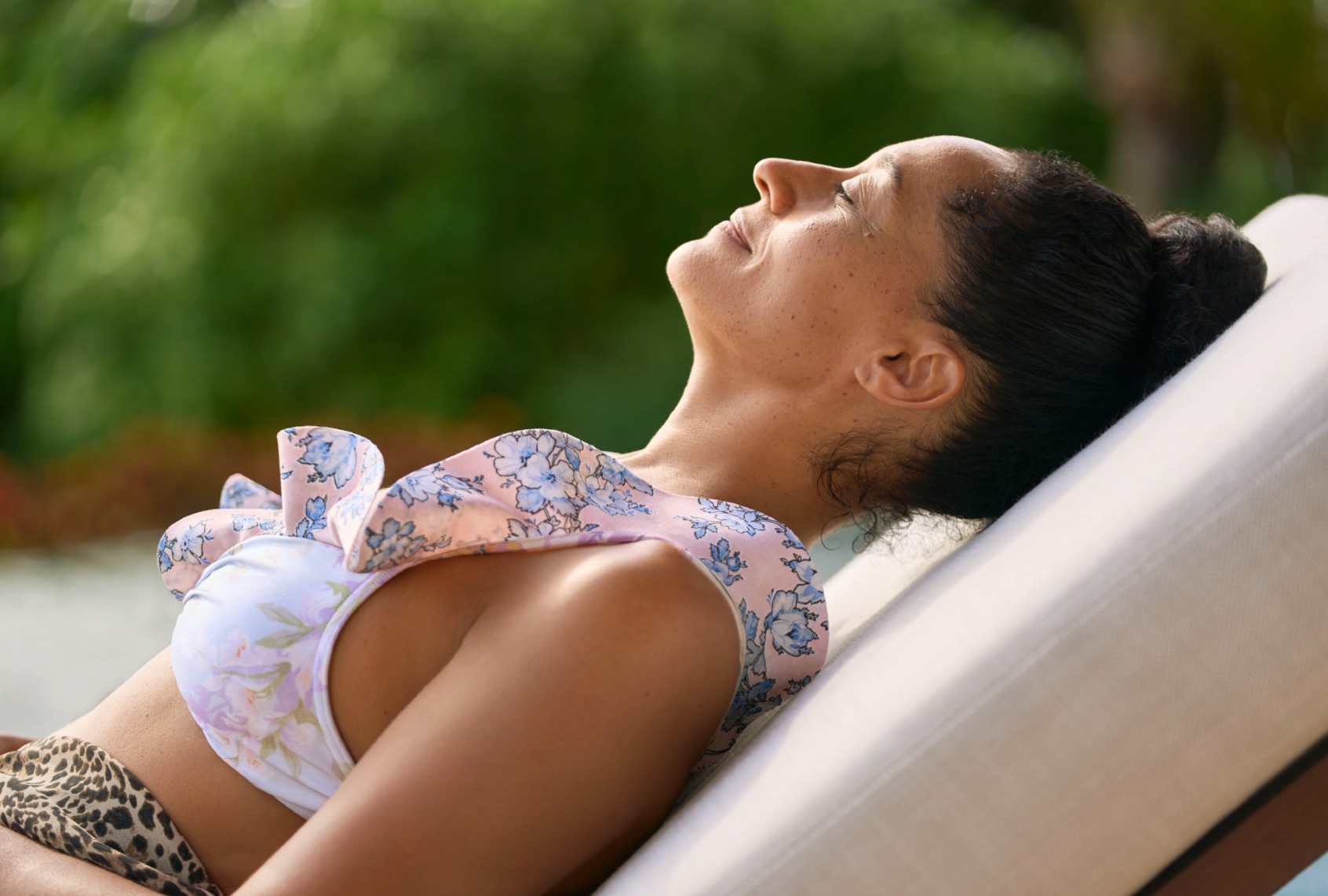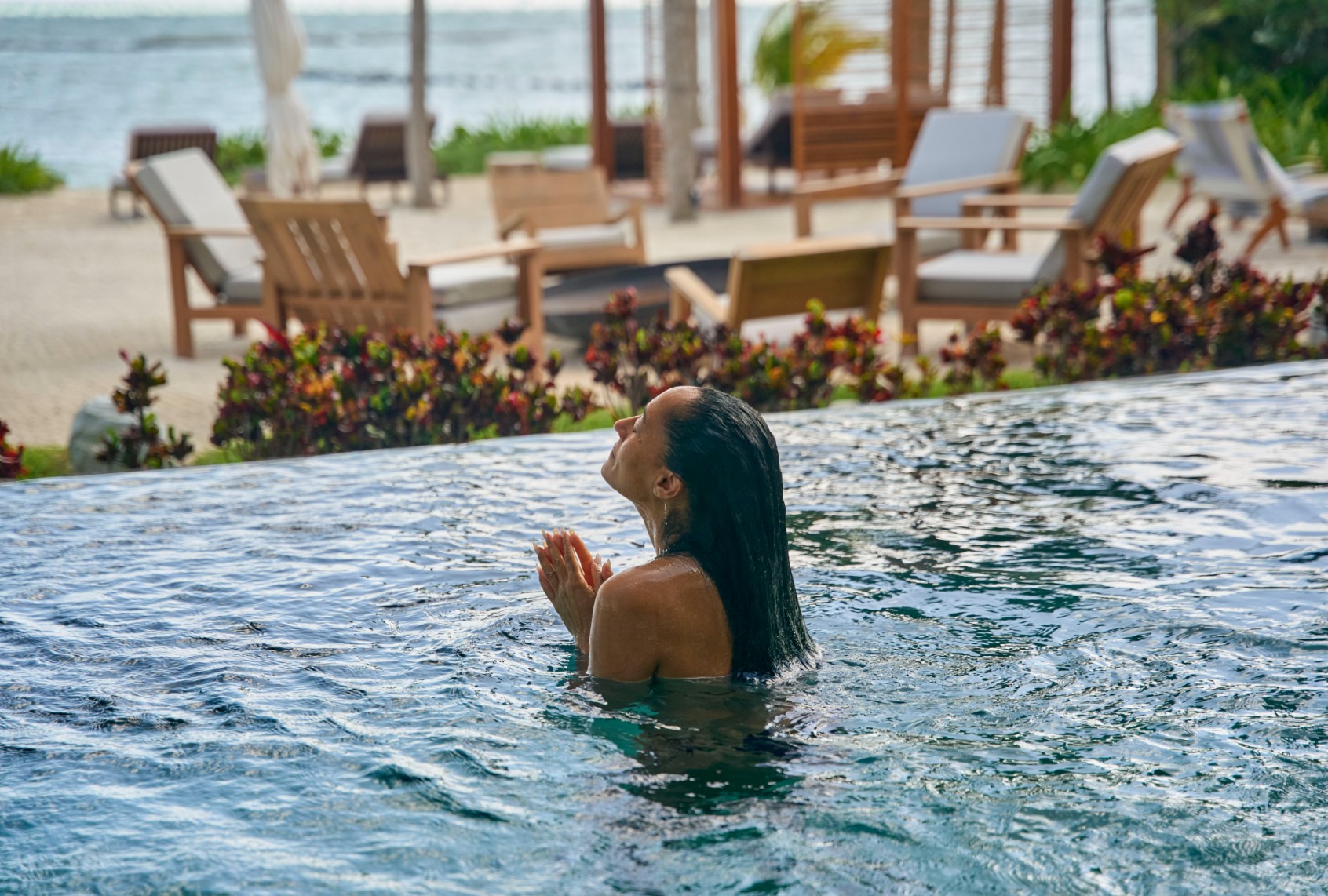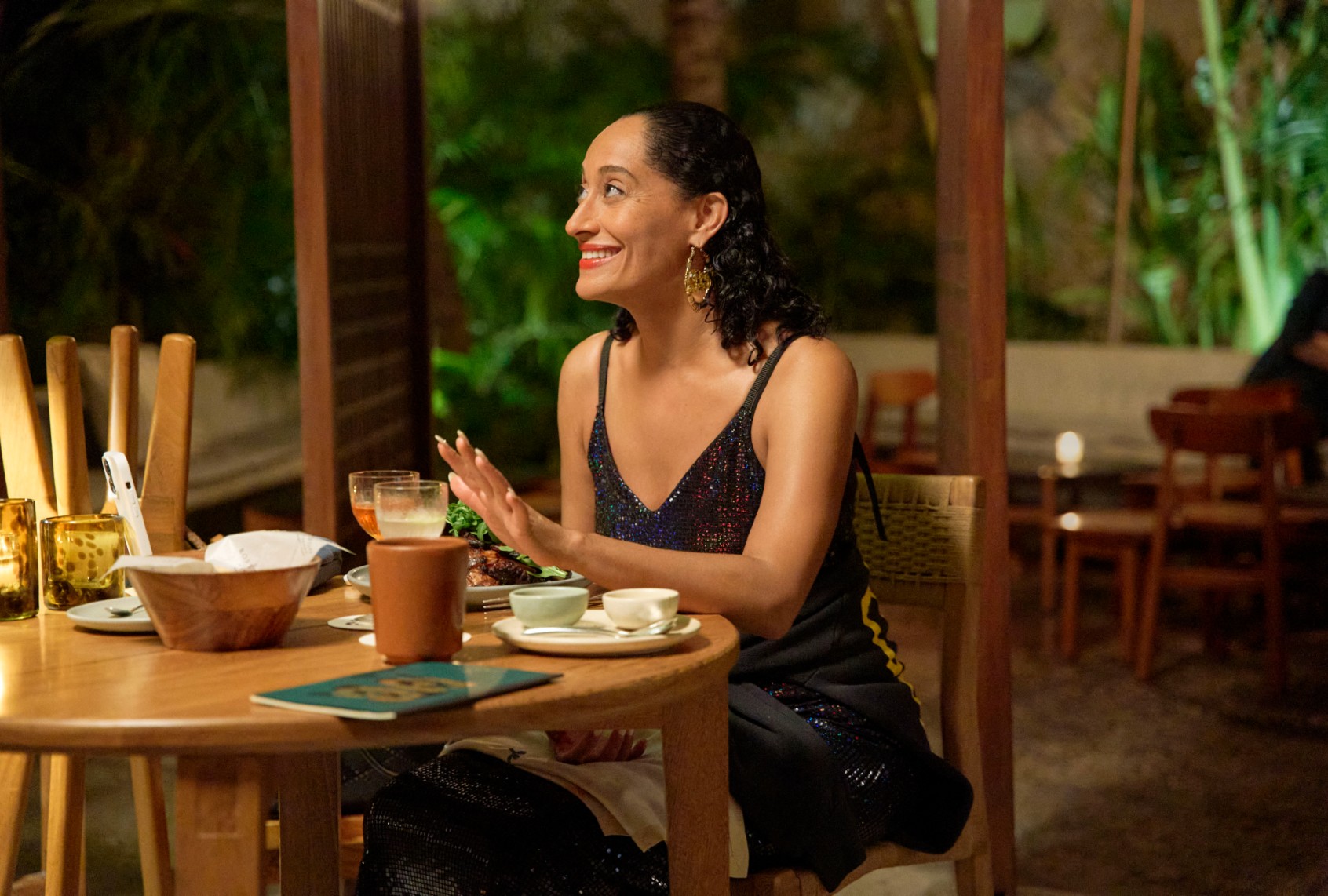Tracee Ellis Ross has probably turned down plenty of free drinks. When she does it on her latest show, “Solo Traveling with Tracee Ellis Ross,” it’s not because somebody recognized her from watching “Girlfriends” or “Black-ish.” At a restaurant in Marbella, Spain, she was just another elegant woman vacationing and dining alone. Ross finds that to be the preferred state of doing things. A group of women seated near her table has mixed feelings about it.
They offer to buy her a drink, which she graciously declines; the incredible glass of red wine she sips with her ribeye steak is quite enough. Still, Ross swings by after she’s finished her meal to thank her neighbors for their generous offer. In response, one woman remarks that seeing Ross eating by herself made her think, “You’re sitting there on your own. It’s not good for you!”
Ross gently contradicts her by explaining it’s very good for her. Moreover, a little solo sojourning is good for all of us.

(Roku) “Solo Traveling with Tracee Ellis Ross”
Modernity has yet to erase the stigma associated with women choosing to move through the world by themselves. Single women are confronted with it most frequently, but even people in relationships may experience some stranger’s pitiful regard while dining alone in public. Daring to step out as a party of one still draws statements about one’s heroism, as if the simple act of taking charge of your own contentment is on par with battling cancer.
Modernity has yet to erase the stigma associated with women choosing to move through the world by themselves.
At various times throughout “Solo Traveling,” Ross speaks to this, but with curiosity instead of frustration. She took her first trip by herself in her 20s. At age 52 and many luxurious vacations later, the actor is merrily determined to show others how glorious that can be.
“So often I look around and I’m like, why are there not more examples of owning your singleness and owning your childlessness with joy and with abandon, or also with choice?” she says during one of her many epiphanies. “Like, it can’t just be Joan of Arc or cat ladies. There’s gotta be something in between!”
“Solo Traveling with Tracee Ellis Ross” doesn’t give Rick Steves anything to fret over. Her show isn’t a repository of safety tips and travel hacks. Those are readily available elsewhere and should be part of any travel preparedness plan.
What isn’t as broadly explored is the common trepidation about venturing out alone, whether to your favorite, familiar eatery or Morocco, Mexico and Spain. Ross says she chose these destinations because they are safe for solo travel, especially for Black women traveling alone.
For two of those places – Mexico and Morocco — the realization that they’re safe may be eye-opening to Americans inundated with headlines about unrest in countries populated by brown and Black people. I know this firsthand, having once regaled an elderly relative about my best friend’s extraordinary solo trip to Peru only to watch her recoil at the thought of any woman by herself in a country with “all that political unrest.”
Mind you, this was many years ago, when my relative’s fears were based on nothing. My friend, however, felt very welcome at each destination and even made several new friends. The only concerns towering over her trip were cloud-ringed mountains and the glory of Machu Picchu, which is visited by around 1.5 million people each year. Presently, that country rates a Level 2 travel advisory (i.e., Exercise Increased Caution) from the State Department. For that matter, so do Spain, Mexico and Morocco. To any experienced tourist, that designation isn’t unusual. But it may be enough to scare off a neophyte.

(Roku) “Solo Traveling with Tracee Ellis Ross”
So we get why Ross opts to normalize voyaging alone instead of speaking to common fears about it. Maybe normalize isn’t the right word; celebrate is better. To her, solo travel is a glorious demonstration of personal freedom. “I get to build my life for myself,” she says.
In many respects, Ross is in a better position to play big than most people. She is single and rich, a prominent fashionista, the daughter of Diana Ross, and the founder and CEO of a haircare company. (Its products are prominently displayed throughout each episode, along with links to the company site. She’s shopping, why shouldn’t you?) To her credit, she doesn’t pretend that she isn’t any of those things.
However, her relative wealth doesn’t preclude anyone from doing their version of what she does. A dip in the pool is a reason to yell, “Thank you for my life!” to the sky. Heavy rain can be taken as a sign to eat tacos and enjoy beautiful cocktails. A rogue drink also appears on her dinner table in the episode where that happens. Ross doesn’t get into the why of it.
We need your help to stay independent
From what she takes on vacation to her in-flight ritual to her mindful hotel closet organization, Ross makes every undertaking worth savoring. With this emphasis, “Solo Traveling with Tracee Ellis Ross” becomes something more satisfying than lifestyle programming or a celebrity vanity project. It’s a rebuttal of the empty rhetoric that has somehow politicized a woman’s right to individual liberty.
The world of tourism entertainment is vast, extending from our TVs to our social media streams. Ross plays in both spaces. Living up to her designation as “the Internet’s favorite rich auntie,” Ross keeps her Instagram followers well fed with endless glamour and lots of clowning around.
“Solo Traveling with Tracee Ellis Ross” becomes something more satisfying than lifestyle programming or a celebrity vanity project. It’s a rebuttal of the empty rhetoric that has somehow politicized a woman’s right to individual liberty.
“Solo Traveling” follows that map, styled as part excursion porn, one part travel diary, and a full showcase of Ross’ easy, goofball charisma. But it’s also genuine and unforced.
“This is me, just sharing,” she muses. “Sharing what it means to learn yourself, and then have the courage to be that person. Not just at home, and not just in your life, but elsewhere, out in the world.”
Ross’ vacation prep is the opposite of Marie Kondo’s pre-pandemic minimalism. She begins two weeks before the airport car shows up at her door and fills multiple suitcases with many more clothes than she’ll wear, snacks, even a tuning fork. Her three-pronged philosophy: Be prepared. Be “meticulously thoughtful” about one’s needs and comforts, hence the tuning fork. Believe me, I had my questions too until she employed it to make herself feel better.
Her favorite rule is bound to be yours too: Pack beautiful clothes, many more than seems sensible. “I pack for the beauty. I pack for the joy. I pack for the clothes,” she explains, finishing with, “And I pack for the disaster.”
She experiences a little of each. Looking elegant no matter what she does is a must, but so is peace and ease.
That includes during episodes of food poisoning or torrential downpours. Even then, because she’s well equipped, Ross finds delight in the fact that she isn’t experiencing these bummers at home.
Solo travel is big business, especially among younger adults. Experts link its rise in popularity to the pandemic transforming our attitudes about being alone. Having been forced to make peace with our own company, more people are finding their own companionship preferable to that of others, especially on vacation.

(Roku ) “Solo Traveling with Tracee Ellis Ross”
American Express’ annual Global Travel Trends Report from 2024 indicated that 76% of Millennial and Gen Z respondents planned a solo trip for that year. The same data indicated that 66% of all respondents would center those vacations around self-love and treating themselves.
That reflects the marketplace and attitudes of many single people, who comprise around 31% of the American populace according to Pew Research. In 2024, solo vacationers fueled an industry trend that hit $482.5 billion and is expected to triple by 2033.
Grand excursions like Ross’ are still rare for everyone, whether you’re rolling with a group or as a party of one. Quick getaways are the solo trips of choice for 57% of American Express survey respondents. But those count, too.
Start your day with essential news from Salon.
Sign up for our free morning newsletter, Crash Course.
Still, as Ross admits, good fortune doesn’t make anyone immune to sensations of isolation and grief. In a tender moment during the Morocco episode, she confesses her loneliness even after she’s had a wonderful time eating tagine and meeting exuberant strangers. But she voices this with an inquisitiveness instead of sorrow.
Maybe, she says, she’s missing some fantasy of what she had with someone. Then she wonders whether loneliness and sadness are the same thing. Happiness and joy, she realizes, are distinct feelings. “Happiness is slicker, bouncier. Joy is wider, deeper.”
Ross rests with those thoughts on her pillowy bed, then smiles broadly. “I get to go shopping tomorrow. We know I love that.” And we can’t help loving that for her, too. Her example shows that one day we might step into our part of that wide, deep ocean of a foreign experience with more confidence, having seen how enticing it can be.
“Solo Traveling with Tracee Ellis Ross” is streaming on the Roku Channel.
Read more
about this topic


